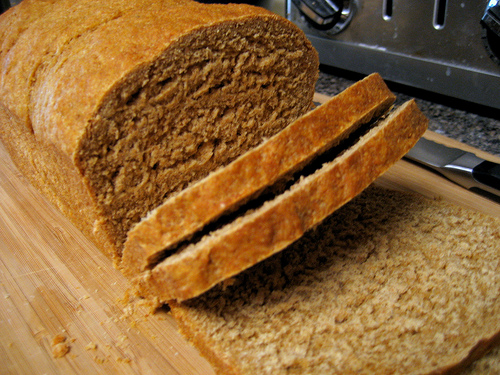While grocery shopping, you’ve probably seen loaves of bread with the labels ‘whole wheat’ and others that say ‘whole grain’. They’re both the same thing, right? The many labels on food packaging can make grocery shopping complicated. No need for any further stress, here we break down the differences between ‘whole wheat’ and ‘whole grain’ and explain whether one is healthier than the other.
Refined Grains

Before delving into the main differences between whole wheat and whole grain, let’s discuss their counterpart: refined grains. White bread, regular pasta, flour, and rice are all made from refined grains that have the bran and germ removed. As a result of this, a bulk of the nutritional value, fiber, and antioxidants are eliminated. While there isn’t anything wrong with consuming refined grains moderation, they’re given a bad rap because of their effects on your body. Mainly, they tend to have a high GI, which causes your blood sugar to spike and drop quickly. This oftentimes leads to hunger and cravings.
Whole Grain
Unlike refined grains, whole grains contain all parts of the grain kernel: the bran, germ, and the endosperm–that’s why whole grains like brown rice usually take longer to cook. Since whole grains consist of the entire kernel, it is more nutritious. Specifically, the bran is loaded with B vitamins, fiber, and antioxidants. The germ contains minerals, protein, and healthy fats, and the endosperm contains mostly carbohydrates, proteins and small traces of vitamins and minerals. Whole grains like brown rice, millet, and quinoa are packed with polyphenols, antioxidants that help to prevent free radical damage and have anti-inflammatory benefits. In addition, their high fiber content will keep you full longer, curb cravings and promote healthy digestion, unlike refined grains.
Whole Wheat
Contrary to belief, there isn’t a vast difference between whole grain and whole wheat. Whole wheat is a subset of whole grain, it just means that during production all parts of the wheat was left intact. For example, when you see a loaf of bread or box of pasta that says “whole wheat” on that packaging simply means that it is made up entirely of wheat kernels and it hasn’t been mixed with other grains. Whole wheat is just as healthy as whole grain products.
Multigrain
Since we’re on the topic of grains, multigrain is worth mentioning. While multigrain may sound fancy and healthy, all it means is that the product was made with multiple grains. This doesn’t mean that those grains are healthy or whole grains. To explain further, products labeled “multigrain’ could contain both refined and unrefined grains, which makes it less nutritious than 100 percent whole grain products. In other words, multigrain isn’t the healthier choice compared to whole grain.
Grocery Shopping Tips

pixfly/Shutterstock
Now that you’re a grain expert now, let’s talk about what to look for when choosing the right whole grain or whole wheat product while at the grocery store.
Pay Attention to the Labels
The easiest way to tell if something is truly whole grain is to look for the whole grain stamp. Created by the Oldways Whole Grain Council (OWGC), its purpose is to help consumers make healthier food choices. Most stamps will read that the product has at least 16 grams of whole grains per serving. Also, they have labels that say if the product was made with 50 percent whole grain, 8 grams, or if they were made with less than 50 percent whole grain–how helpful! Although this isn’t required by law, many manufacturers place this stamp on their products.
Read the Ingredients
Reading the ingredients is crucial. The keywords to look for are “bleached or “enriched”–this means that some of the ingredients contain refined grains. In addition, check for GMOs, artificial flavors, and preservatives. When in doubt, stick to products with ingredients you are familiar with.
Limit Added Salt and Sugar
Speaking of ingredients, make sure to choose products with the least amount of salt and sugar. Par contain less than 2 grams of sugar or less than 200 milligrams of salt. Consuming an excess of these two could counteract the health benefits of whole grains.
